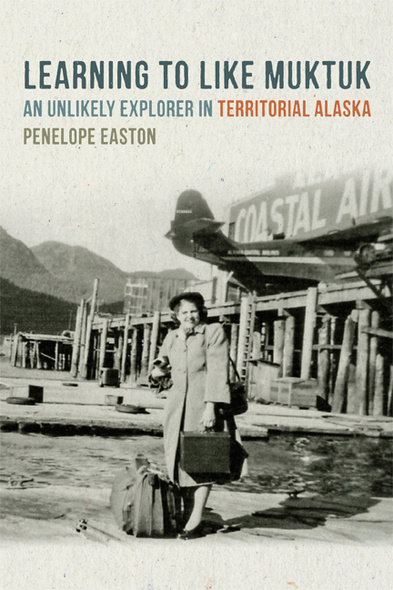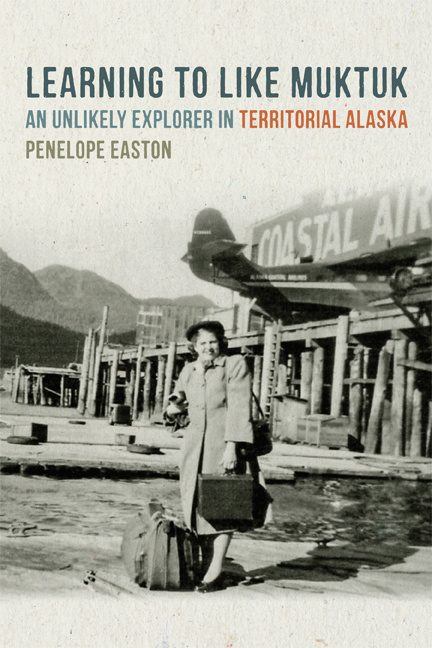Learning to Like Muktuk
An Unlikely Explorer in Territorial Alaska
Oregon State University Press
When Penelope S. Easton, a young, vigorous, sensible World War II veteran with a Masters in Public Health Nutrition, embarked on a journey to Territorial Alaska to serve as the dietary consultant for the Alaskan Health Department, she could not anticipate the deplorable health-related conditions that she would find. Easton observed the effects of measles and tuberculosis epidemics, educational philosophies that opted to teach Native children only in English, a scarcity of imported food supplies, and the derision of native foodways.
Fascinated by the foods of indigenous Alaskans, such as muktuk (strips of whale skin and blubber) she took every opportunity to learn about Native Alaskan peoples and their food cultures. As she gained knowledge, Easton identified the need for public health personnel to know and appreciate the dietary traditions and adaptations of the region and became an advocate for preserving native food customs.
Learning to Like Muktuk draws on Easton’s detailed field reports, photographs, letters, and other documents, some of which may be the only remaining descriptions of native Alaskan foodways from the period between the end of WWII and statehood.The author describes her experiences as a public health advisor in both cities and rural areas. She helped hospitals and children’s homes with food procurement and service, prepared regional nutritional information materials, and worked with public health nurses conducting classes for adults and school children. Threaded through the narrative are stories of her adventures: a tumultuous flight through a glacial storm and spending the night on the frozen tundra, traveling with a daredevil bush pilot, and witnessing the harvest of a whale carcass.
Penelope S. Easton’s memoirs convey a new perspective on the interactions of Native and non-Native groups at a critical point in Alaska’s history. Learning to Like Muktuk will enthrall readers interested in public health, indigenous foods, and the hazards of exploring the Territory.
Fascinated by the foods of indigenous Alaskans, such as muktuk (strips of whale skin and blubber) she took every opportunity to learn about Native Alaskan peoples and their food cultures. As she gained knowledge, Easton identified the need for public health personnel to know and appreciate the dietary traditions and adaptations of the region and became an advocate for preserving native food customs.
Learning to Like Muktuk draws on Easton’s detailed field reports, photographs, letters, and other documents, some of which may be the only remaining descriptions of native Alaskan foodways from the period between the end of WWII and statehood.The author describes her experiences as a public health advisor in both cities and rural areas. She helped hospitals and children’s homes with food procurement and service, prepared regional nutritional information materials, and worked with public health nurses conducting classes for adults and school children. Threaded through the narrative are stories of her adventures: a tumultuous flight through a glacial storm and spending the night on the frozen tundra, traveling with a daredevil bush pilot, and witnessing the harvest of a whale carcass.
Penelope S. Easton’s memoirs convey a new perspective on the interactions of Native and non-Native groups at a critical point in Alaska’s history. Learning to Like Muktuk will enthrall readers interested in public health, indigenous foods, and the hazards of exploring the Territory.
Penelope S. Easton learned to “make do” with what she had and developed a spirit of adventure that was essential in preparing her for work in Territorial Alaska as a child of the Great Depression. The epilogue of the book describes her returns to Alaska as a member of research teams from 1996 through 2005. She now resides in Durham, North Carolina. At the age of ninety-one, Learning to Like Muktuk is her first book.





